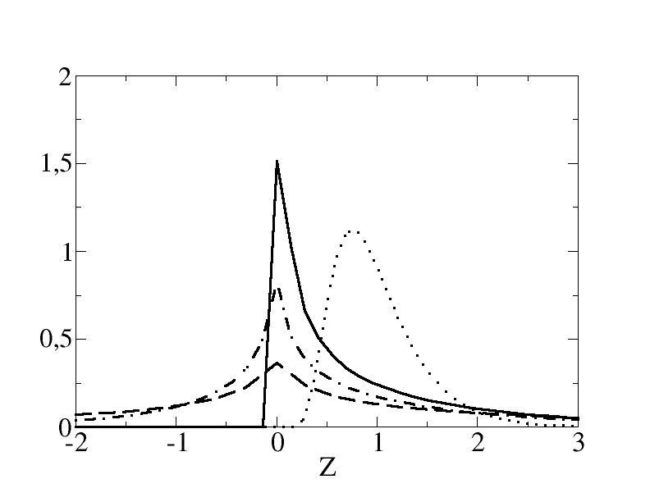
This month the NPG Paper of the Month award is achieved by Achim Wirth for his paper “On fluctuating momentum-exchange in idealised models of air-sea interaction” (https://www.nonlin-processes-geophys.net/26/457/2019/).
Achim tells us about the importance of the results achieved with this paper for investigating the energy coupling between the ocean and the atmosphere.
Achim obtained his PhD at the University of Nice (Franc), doing research on turbulence theory. He then moved to oceanography working at UCLA (USA) and Geomar (Germany). Since 2005 he holds a permanent position at CNRS working in the LEGI laboratory at the Université Grenoble Alpes (France). From 2014 to 2019 he was director of LEGI. His recent research is on applying methods of non-equilibrium thermodynamics to air-sea interaction.
The exchange of momentum, heat, water and chemical fluxes at the atmosphere-ocean interface is a key for understanding the dynamics of the atmosphere, the ocean and the climate, as well as their response to changes in the forcing of the climate system. The fluxes at the interface are the result of a variety of physical processes over a large range of scales in space and time. The impact of the exchange on the atmosphere and ocean dynamics is usually described by local models, called bulk formulas. The exchange of momentum is caused by shear which depends on the atmospheric wind and many other physical quantities, such as the ocean velocity, the sea-state and the density stratification in the atmosphere and the ocean. In this work three different approaches for parametrizing the shear at the air-sea interface are compared. The difference relies on how the ocean velocity is considered in the calculation of the shear force at the air-sea interface: i) the ocean velocity is ignored and the shear is only dependent on the atmospheric velocity, or ii) the ocean velocity is considered for the shear-force evaluation but not to the atmosphere. These two models are called “one-way” as the ocean dynamic does not act on the atmosphere, and they are generally used whenever the atmospheric forcing is known prior to the integration of the ocean model. A third model can be developed to be mechanically consistent as the shear force, applied to the ocean and the atmosphere, is calculated from the difference between the atmospheric and the oceanic velocity vectors, also following Newton’s laws: it is called “two-way”. In the last decade it became evident that the resulting ocean and climate dynamics critically depend on the type of parametrisation used.
The study by Achim Wirth (https://www.nonlin-processes-geophys.net/26/457/2019/) applies concepts from non-equilibrium statistical mechanics to air-sea interaction. Due to the difference in the characteristic timescales of the fast dynamics of the light atmosphere and the slow dynamics of the heavy ocean, air-sea interaction is a textbook case for employing these methods which date back to the works of Albert Einstein, who developed them to describe the slow dynamics of a heavy Brownian particle subject to collisions with fast moving light molecules. The manuscript shows analytical calculations for the models with deterministic and random forcing (white and colored): while the short term behavior is similar in all models (only small quantitative differences are found), the long-term behavior differs qualitatively between the models. By means of the fluctuation-dissipation-relation, which connects the fast atmospheric motion to the slow oceanic dynamics, of the fluctuation-dissipation-theorem, comparing the response to an external forcing to internal fluctuations, and by using results from numerical integrations of stochastic differential equations the author shows that the fluctuation-theorem, which compares the probability of positive to negative fluxes of the same magnitude, holds for the energy gained by the ocean from the atmosphere. The results show that when ocean velocities are not considered in the models of air–sea interaction, the atmosphere loses, on average, more energy and the ocean gains more energy, as compared to when the ocean velocities are taken into account. This work shows that, since determining the response to a sudden change in the external forcing is a key in many applications, such as the response of the atmospheric and oceanic planetary-boundary-layer dynamics to a change in the synoptic weather condition, establishing fluctuation-dissipation relationships can provide deeper understanding on the role of momentum-exchange in modeling the ocean-atmosphere interaction.
